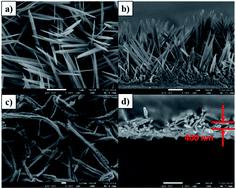当前位置:
X-MOL 学术
›
Sustain. Energy Fuels
›
论文详情
Our official English website, www.x-mol.net, welcomes your
feedback! (Note: you will need to create a separate account there.)
Boosting cell performance with self-supported PtCu nanotube arrays serving as the cathode in a proton exchange membrane fuel cell
Sustainable Energy & Fuels ( IF 5.0 ) Pub Date : 2020-05-05 , DOI: 10.1039/d0se00103a Dewei Yao 1, 2, 3, 4, 5 , Hongmei Yu 1, 2, 3, 4, 5 , Wei Song 1, 2, 3, 4, 5 , Xueqiang Gao 1, 2, 3, 4, 5 , Zhixuan Fan 1, 2, 3, 4, 5 , Guang Jiang 1, 2, 3, 4, 5 , Xinye Sun 1, 2, 3, 4, 5 , Zhigang Shao 1, 2, 3, 4, 5
Sustainable Energy & Fuels ( IF 5.0 ) Pub Date : 2020-05-05 , DOI: 10.1039/d0se00103a Dewei Yao 1, 2, 3, 4, 5 , Hongmei Yu 1, 2, 3, 4, 5 , Wei Song 1, 2, 3, 4, 5 , Xueqiang Gao 1, 2, 3, 4, 5 , Zhixuan Fan 1, 2, 3, 4, 5 , Guang Jiang 1, 2, 3, 4, 5 , Xinye Sun 1, 2, 3, 4, 5 , Zhigang Shao 1, 2, 3, 4, 5
Affiliation

|
The high cost and huge consumption of the Pt catalyst hinder the large-scale commercialization of fuel cells. To achieve higher cell performance at a relatively low Pt loading, improvements in facilitating the reactant gas transportation and catalyst activity are both essential. Here, a novel catalyst layer based on vertically aligned PtCu nanotube arrays as the cathode was rationally designed and constructed. The thickness of the catalyst layer was almost 400 nm and no ionomer existed in the catalyst layer. At 67.1 μg cm−2 Pt at the cathode, the maximum mass specific power density of 16.08 kW gPt−1 was achieved by the novel catalyst layer, which was 1.64-fold higher than that of the conventional Pt/C catalyst layer (100 μg cm−2). After accelerating durability tests, the catalyst layer based on the PtCu nanotube arrays as the cathode exhibited better stability because the performance was maintained at 79.5% of the initial value, which was higher than that of the conventional Pt/C electrode (64.7%).
中文翻译:

通过自支撑的PtCu纳米管阵列作为质子交换膜燃料电池的阴极来提高电池性能
Pt催化剂的高成本和巨大消耗阻碍了燃料电池的大规模商业化。为了在相对较低的Pt负载下获得更高的电池性能,促进反应物气体传输和催化剂活性的改进都是必不可少的。在此,合理设计和构建了以垂直排列的PtCu纳米管阵列为阴极的新型催化剂层。催化剂层的厚度几乎为400nm,并且在催化剂层中不存在离聚物。在阴极处为67.1μgcm -2 Pt时,新型催化剂层实现的最大质量比功率密度为16.08 kW g Pt -1,比常规Pt / C催化剂层高1.64倍(100微克厘米-2)。在加速耐久性测试后,基于PtCu纳米管阵列作为阴极的催化剂层表现出更好的稳定性,因为其性能保持在初始值的79.5%,高于常规Pt / C电极的64.7%。
更新日期:2020-06-30
中文翻译:

通过自支撑的PtCu纳米管阵列作为质子交换膜燃料电池的阴极来提高电池性能
Pt催化剂的高成本和巨大消耗阻碍了燃料电池的大规模商业化。为了在相对较低的Pt负载下获得更高的电池性能,促进反应物气体传输和催化剂活性的改进都是必不可少的。在此,合理设计和构建了以垂直排列的PtCu纳米管阵列为阴极的新型催化剂层。催化剂层的厚度几乎为400nm,并且在催化剂层中不存在离聚物。在阴极处为67.1μgcm -2 Pt时,新型催化剂层实现的最大质量比功率密度为16.08 kW g Pt -1,比常规Pt / C催化剂层高1.64倍(100微克厘米-2)。在加速耐久性测试后,基于PtCu纳米管阵列作为阴极的催化剂层表现出更好的稳定性,因为其性能保持在初始值的79.5%,高于常规Pt / C电极的64.7%。











































 京公网安备 11010802027423号
京公网安备 11010802027423号